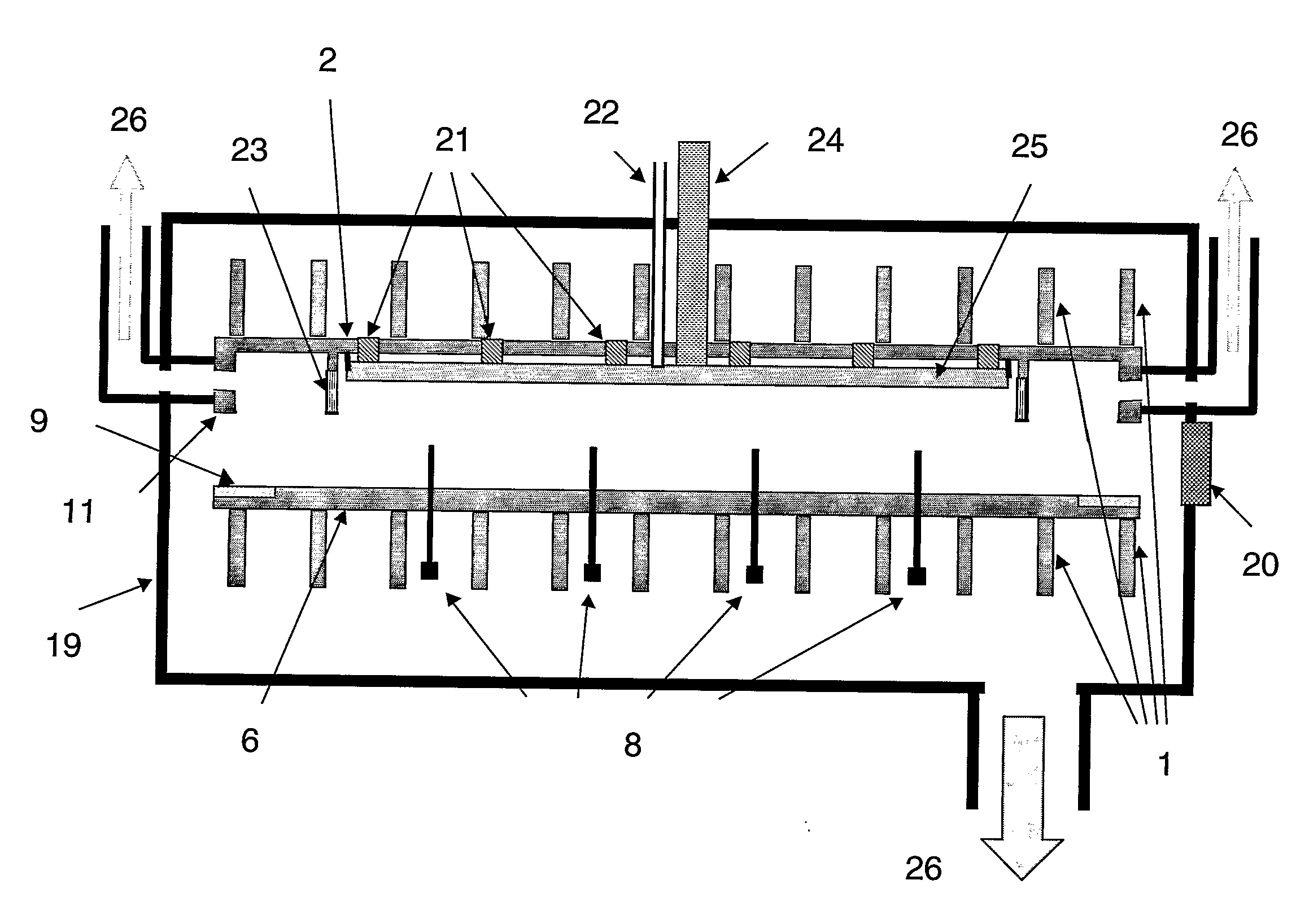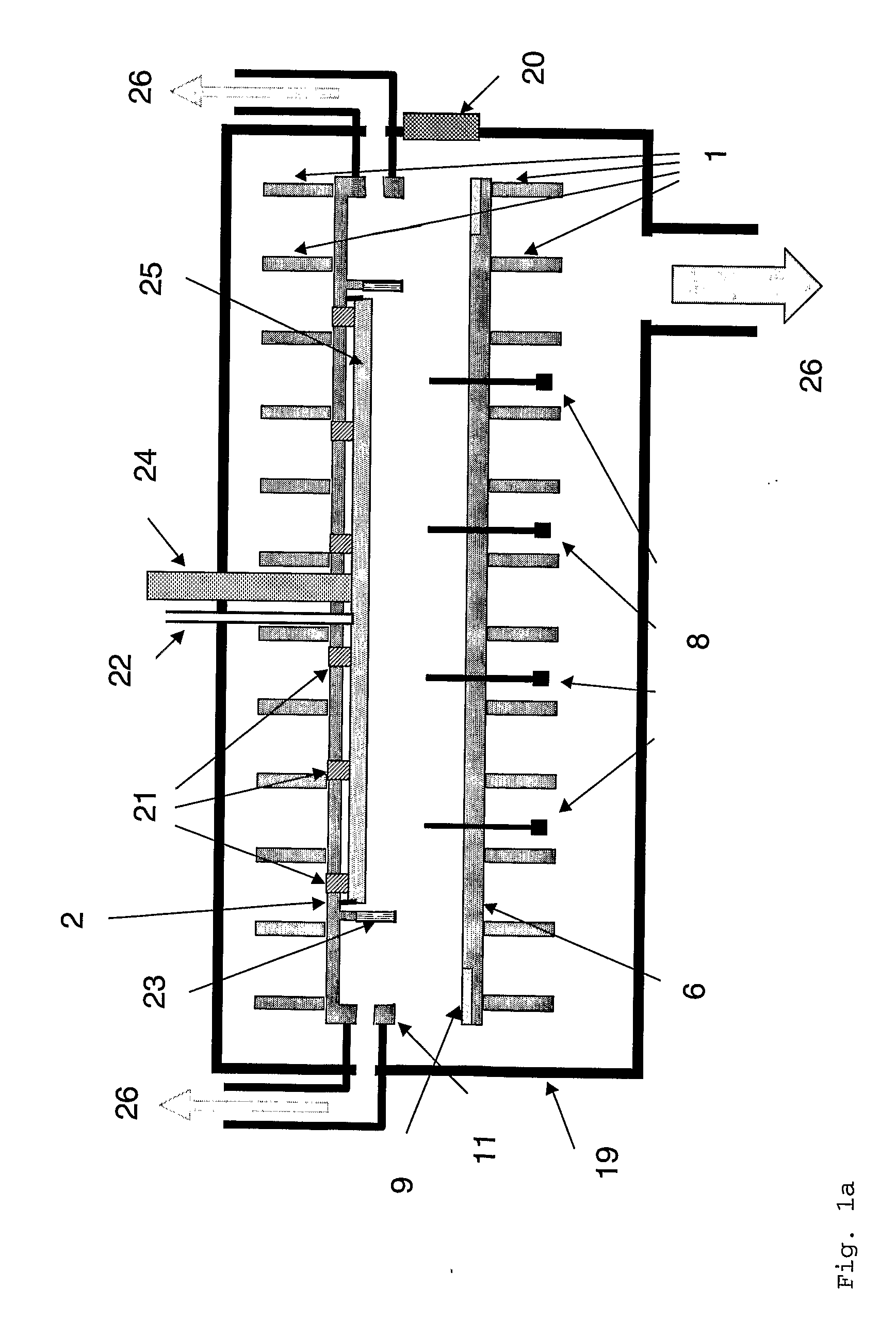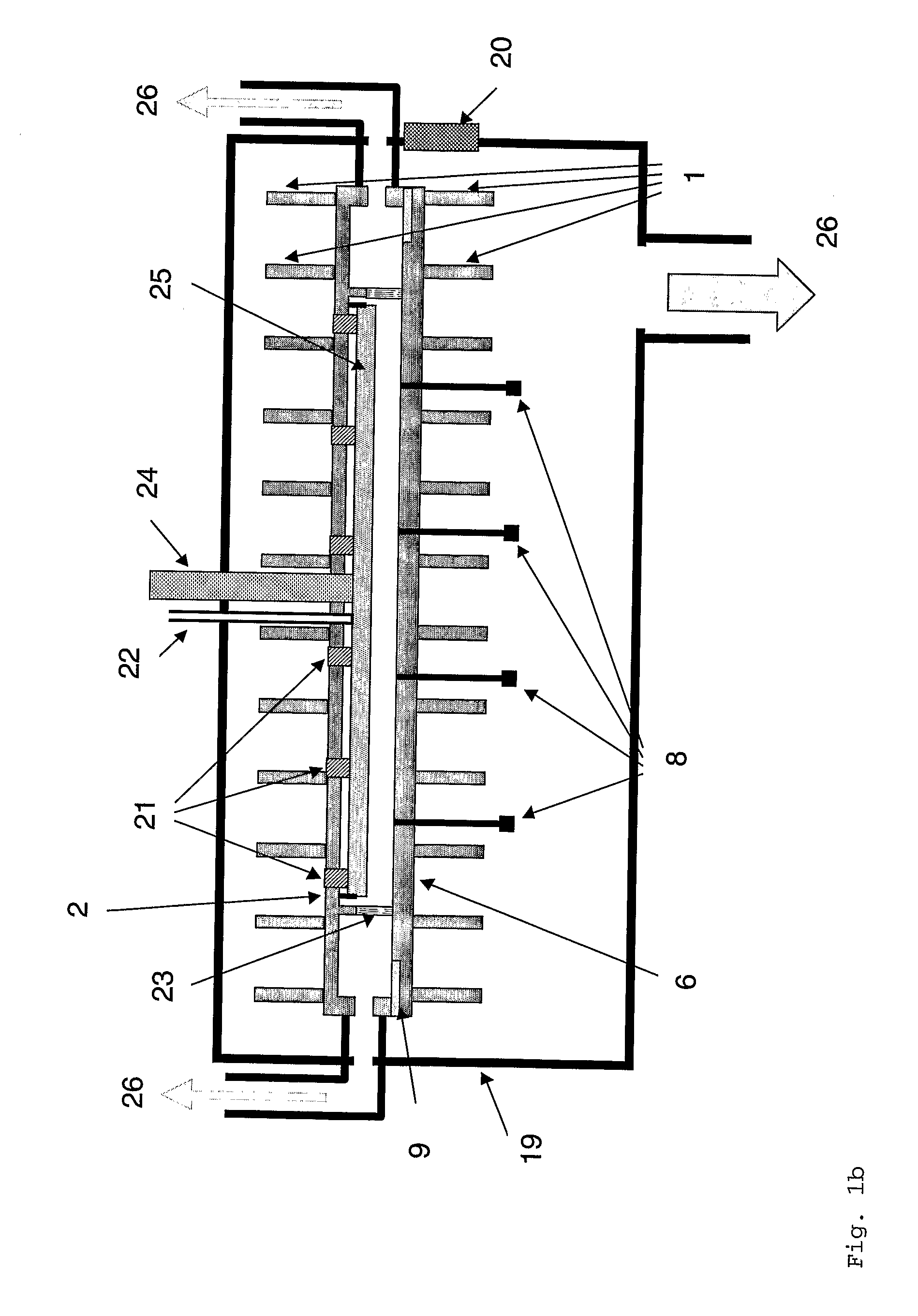Vacuum Processing Chamber for Very Large Area Substrates
a technology of pecvd and processing chamber, which is applied in the direction of chemical vapor deposition coating, coating, plasma technique, etc., can solve the problems of aluminum alloys showing creep deformation, non-uniform deposition on the substrate, and becoming more and more difficult to keep the inner reactor substantially fla
- Summary
- Abstract
- Description
- Claims
- Application Information
AI Technical Summary
Benefits of technology
Problems solved by technology
Method used
Image
Examples
Embodiment Construction
[0019] Therefore, the present invention is based on a new reactor concept. The reactor is divided in two parts; a reactor bottom 6 and a reactor top 2 (see FIG. 1). The reactor top 2 is attached to the outer vacuum process chamber 19 preferably by stiffeners 1 (connection not shown in FIG. 1). The reactor bottom 6 (or bottoms in the case of multiple reactor systems in a single outer chamber) is movable vertically such that a slit opens between the reactors side wall 11 and the sealing plate 9. When the reactor is fully opened the slit broadens and the lifting pins 8 start sticking out. The loading fork (not shown in FIG. 1) is then able to deposit the substrate on the lifting pins for loading, or to retract the substrate from the lifting pins 8 by lifting the substrate from underneath through the chamber gate valve 20. This “inverted shoe box” type of opening has the major advantage that the height of the reactor walls 11 and thus accordingly the plasma gap can be relatively small. ...
PUM
| Property | Measurement | Unit |
|---|---|---|
| temperature | aaaaa | aaaaa |
| lengths | aaaaa | aaaaa |
| temperature | aaaaa | aaaaa |
Abstract
Description
Claims
Application Information
 Login to View More
Login to View More - R&D
- Intellectual Property
- Life Sciences
- Materials
- Tech Scout
- Unparalleled Data Quality
- Higher Quality Content
- 60% Fewer Hallucinations
Browse by: Latest US Patents, China's latest patents, Technical Efficacy Thesaurus, Application Domain, Technology Topic, Popular Technical Reports.
© 2025 PatSnap. All rights reserved.Legal|Privacy policy|Modern Slavery Act Transparency Statement|Sitemap|About US| Contact US: help@patsnap.com



